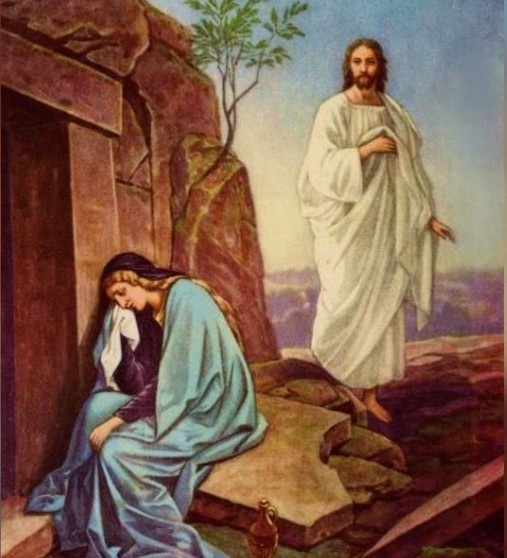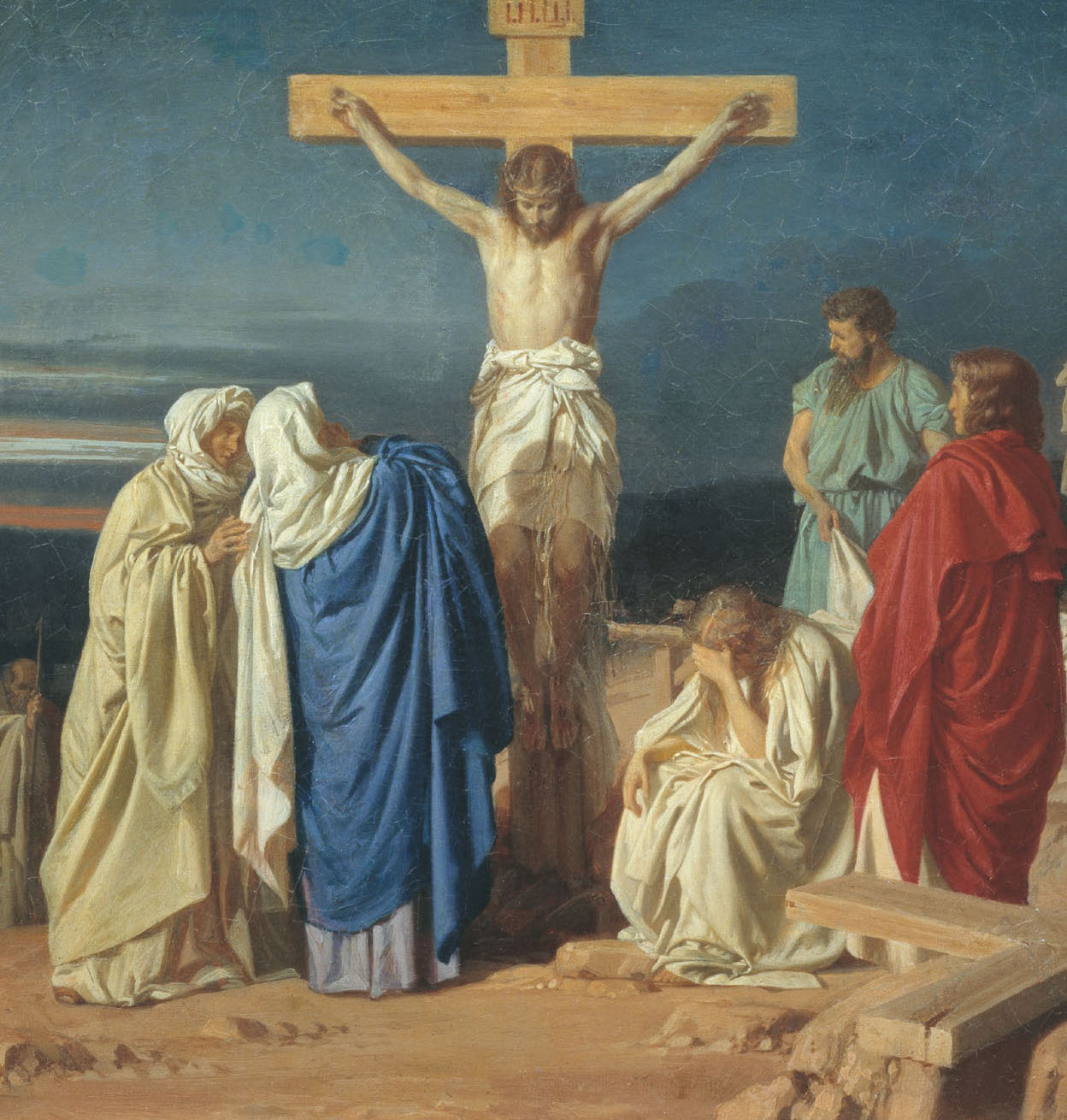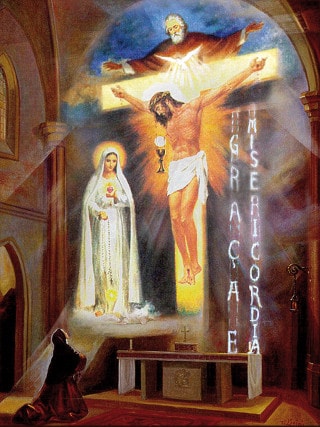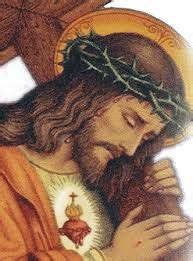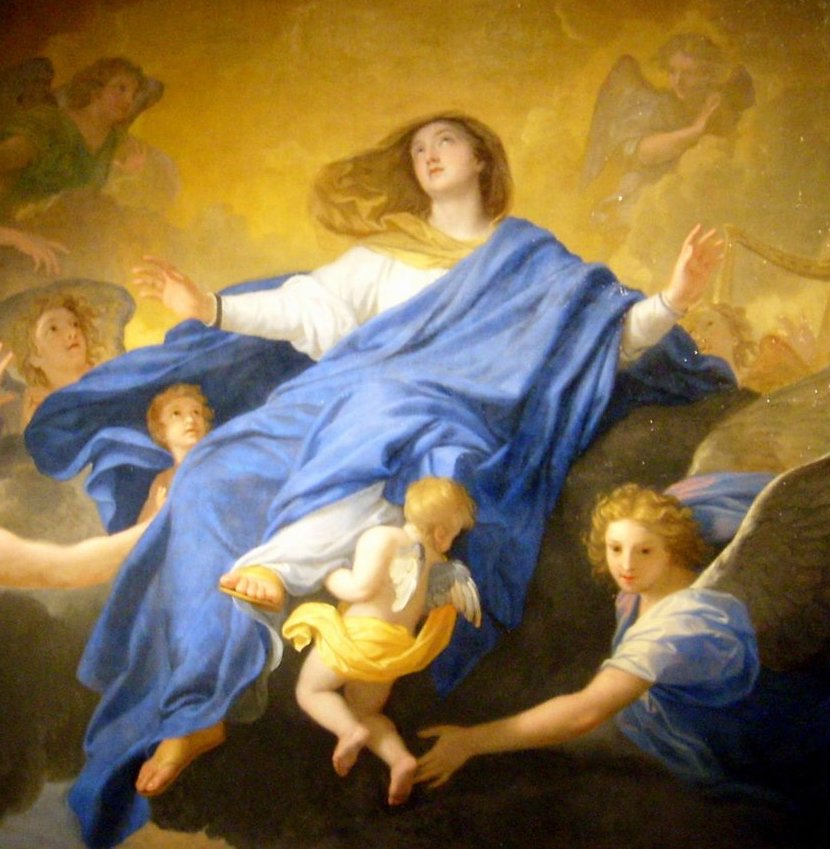At the beginning of May, we leave behind the time of the Resurrection and enter the month of Mary. We’re going to make the link between the two by meditating on the Resurrection, and in particular on the often overlooked role of the Blessed Virgin during this great mystery.
To fully appreciate the power of this Resurrection, we must first look back at the reality of what happened just before: the death of Our Lord. The Christ who was so good, who performed so many miracles, the long-awaited Messiah who brought hope and salvation to the world, the One for whom the apostles gave up everything and whose glory was beginning to spread everywhere, here He was condemned and killed in less than 24 hours. What a shock! Everything stops. The apostles are devastated. Their Master and Lord is no more. It’s an unbearable failure. Yes, on this Easter morning, desolation seems to reign. Faced with the reality of death, the apostles’ faith in Jesus’ Resurrection has vanished. But a flame remains. Only the Blessed Virgin, in the midst of her suffering on Holy Saturday, continues to believe and holds on to the faith of the nascent Church.

Easter morning arrives and Jesus reserves his first appearance for his Mother. The evangelists make no mention of this. Why not? There are two reasons. On the one hand, it is impossible to describe the intensity of this moment, as human words are powerless here. On the other hand, the intimacy of this moment belongs only to the two Hearts of Jesus and Mary, and is hidden from us. But let’s try to approach the beauty of their encounter.
Mary underwent the terrible ordeal of Holy Saturday, a veritable agony. She was overcome with grief. The memory of the Passion and the Cross, of the appalling torture of her Son, overwhelms her, and is still before her weeping eyes. She feels in her whole being that lifeless body she carried in her arms at the foot of the Cross, that beautiful face now unrecognizable, that beloved Heart pierced. Faith alone keeps the Blessed Virgin alive. She has no doubts, and knows that her Son will rise again. That’s why she doesn’t run, doesn’t go to the tomb, doesn’t look for Jesus: she waits for him. Her Heart, overcome with grief, nevertheless prepares for the shock of reunion. Pope Saint Albert the Great would say, “Jesus appears to her, not to teach her about his resurrection, but to fill her heart with joy.”
And suddenly… Her Jesus is there, before her, resplendent with beauty, life and love. His gaze is plunged into his Mother’s eyes. Their hearts are once again united in the triumph of Love, in victory over death. Let’s listen to the words of Dom Guéranger, the famous Benedictine monk of the 19th century: “Our Lord himself described this ineffable scene in a revelation he made to the seraphic virgin Saint Theresa. He deigned to confide in her that the divine Mother’s despondency was so profound that it would not have taken her long to succumb to her martyrdom, and that when He showed Himself to Her at the moment when He had just risen from the tomb, She needed a few moments to come back to Herself before being able to taste such joy; and the Lord adds that He stayed with Her for a long time, because this prolonged presence was necessary to Him. “
“What human language would dare attempt to translate the outpourings of Son and Mother at this longed-for hour? Mary’s eyes, exhausted with weeping and sleeplessness, suddenly open to the soft, bright light that announces the approach of her beloved ; The voice of Jesus ringing in her ears, no longer with the sorrowful accent that once descended from the cross and pierced her maternal heart like a sword, but joyful and tender, as befits a son who comes to recount his triumphs to the woman who gave him birth; the appearance of the body she received in her arms three days ago, bloody and lifeless, now radiant and full of life.”
The fact that Our Lord appeared first to the Blessed Virgin is understandable. She is His Mother. That is enough. But there are other reasons too. She suffered the most after Him. She kept the faith. So it’s only natural that the honor of this first apparition should go to Her. Saint Ignatius of Loyola would explain that Our Lord’s Resurrection is the founding act of the Church. This Church is entrusted first and foremost to the Blessed Virgin as Co-Redemptrix, and so it is only natural that Christ should appear to her first.
After his Mother, Jesus reserved his second appearance for Saint Mary Magdalene. Why, one might ask, before the apostles? Certainly, she was at the foot of the Cross, and Our Lord no doubt wanted to thank her for her courage and fidelity. But St. John was also at the foot of the Cross, and was not entitled to this second apparition. The explanation undoubtedly has to do with Mercy. Christ came to save sinners. Nothing pleases him more than a repentant sinner. He is the good shepherd so happy to find a lost sheep. He is the father who gives a feast to the prodigal son who returns to him. Saint Mary Magdalene is a symbol of this, having wept over her faults. By appearing to her just after the Blessed Virgin, Jesus wants to show us how much repentant sinners have a place in His Heart. “I tell you that there will be more joy in Heaven over one sinner who repents, than over ninety-nine righteous people who need no repentance. “(Luke 15:9)
Let’s turn now to the fruit of mystery: faith. Nowadays, this notion is sometimes misunderstood, and we hear people say: I have faith because I believe that God exists. But this often expresses a simple belief, more or less vague, in a superior being about whom we know little and who has no impact on our way of life. This belief is in fact a simple, natural and logical reasoning that anyone can make. ” The object of faith is not “the existence of God”, because God’s existence is accessible to natural reason. Faith, on the other hand, is supernatural. Faith deals with what human reason and intelligence cannot know for themselves. (..) Faith is adherence to God revealing Himself. The object of faith is chat God makes known to us about HimselfThis is the constant and universal teaching of the Church.
Thus, the Blessed Virgin’s faith on Holy Saturday was not to believe in the existence of God. Our Lady’s faith was to believe what her Son, the true God, had revealed: His Resurrection. The apostles, who still believed in the existence of God, had lost their faith because they doubted the Resurrection. In other words, faith means believing in the Holy Trinity, in Christ as true God and true man, in the Immaculate Conception, in the Real Presence in the Eucharist, in the existence of heaven and hell, in eternal life… Faith is the Creed. We find this in the great prayer of the act of faith: ” My God, I firmly believe all thetruths that you have revealed to me and which Youteach usthrough Your Holy Church, becauseYou cannot deceive Yourself, nor deceive us.
But faith is not blind. Having faith does not mean that man cannot then seek to understand the content of faith with his intelligence. Saint Anselm of Cantorbury summed it up beautifully: ” Faith seeking intelligence “. This is exactly what the Blessed Virgin did at the Annunciation. At the Angel’s announcement, she put her intelligence to work to enlighten her faith, asking the question “How is this possible? This is also the approach of the “meditation” on the mysteries of the Rosary that she asked us to do at Fatima. We begin by believing in the revealed mysteries, and then our intelligence comes to enable us to deepen and better understand them. In the words of Saint Augustine: “faith precedes, intelligence follows”.
So, to conclude, let us pray for all those who do not yet have faith, by repeating this beautiful prayer that the angel of Fatima taught us during his apparition at Fatima in 1916 to prepare for the coming of Our Lady: “My God, I believe, I adore, I hope and I love you. I ask your forgiveness for all those who do not believe, do not adore, do not hope and do not love you.”
Author : Alliance 1ers Saturdays of Fatima
